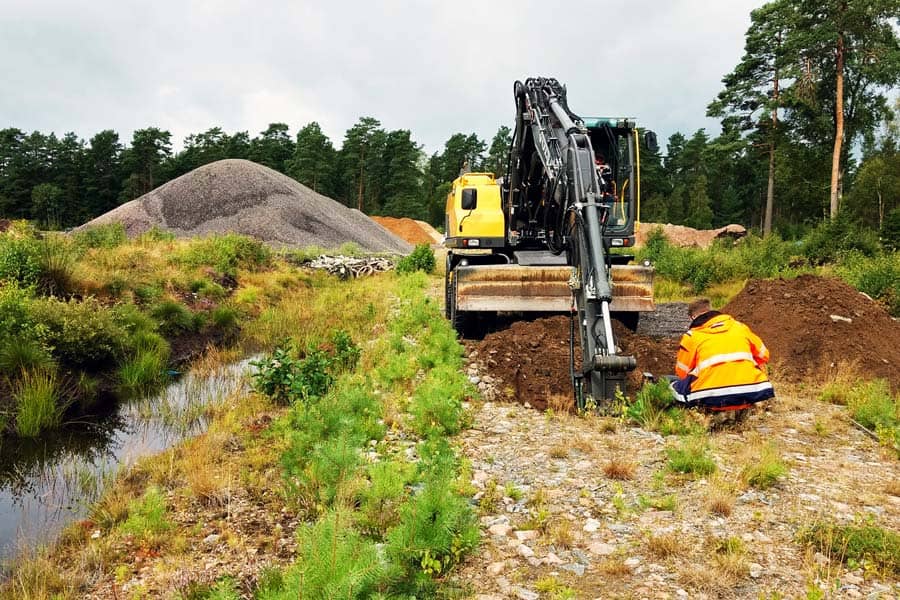In 1800, England was a rural-based country. Just 10% of its population lived in towns and cities. But times change, and in the wake of industrialization, rising urban employment and improving living conditions, this figure has now risen to more than 90%.
According to the Office for National Statistics, the overall U.K. population is set to pass the 70 million mark by the mid-2030s, piling on the pressure to build thousands of new homes every year.
The relentless rise in population has seen governments facing the same problem over the years—how quickly can the required new homes be delivered? And where will they be built?
In December 2020, the U.K. government outlined its latest housing plans, publishing proposals for measures that included a commitment to turn vacant buildings and under-used land into new homes.
This land often goes by another name: brownfield sites. Think of the word “brownfield,” and the mind conjures up images of desolate wastelands, contaminated by years of industrial use, unfit for anything other than illegal dumping and landfill. But a brownfield site means that it is previously used or developed land, which is or was occupied by a structure. They are usually found in urban areas.
Not all brownfield land is contaminated
This is an understandable—albeit not always helpful—take. Yes, brownfield land can be contaminated—although it isn’t always—and in such cases, it requires a lot of work to bring it up to a standard that could be used for other purposes.
But the effort is often worth it. Take the site of the O2 arena in south east London. Previously used as a gasworks, development of the brownfield site operation cost in excess of £150m in the late 1990s.
Deemed one of the most extensive and integrated ground contamination turnarounds ever carried out in the U.K., the brownfield development paid off, with the venue now regarded as one of the leading live entertainment centers in the world, notwithstanding the COVID-19 pandemic.
Not only this, but the area surrounding the O2 is now the subject of considerable brownfield regeneration efforts, showing what can be done with vision, commitment and investment.
Yet the potential for brownfield land goes further than merely smartening up massive ex-industrial sites.
Small parcels of disused land can also be developed for housing, the very size of the plot calling for innovation in construction and the use of cutting-edge technologies.
Challenges and solutions
Developing such brownfield sites certainly poses challenges, not least around access and issues such as topography.
But problems like these merely serve to prompt architects and developers to implement the latest thinking to overcome them.
One example is Atkins’ micro-housing scheme built on the site of disused garages behind a block of council flats in Lambeth, south London.
In Atkins’ case, it made the most of every centimeter of available space and chose to use factory-made panels to put up the frames of the homes. Such modern methods of construction techniques are increasingly being used on similar sites across the country.
This brings up another issue. That brownfield sites are available for housing is not in question. The problem often lies in identifying them and having the wherewithal to coordinate their transformation.
According to regeneration specialist U+I, as many as 348,000 homes could be developed on brownfield sites, but efforts are being undermined by a lack of resources and skills at the local authority level, which could otherwise identify that which is suitable for development.
Identifying opportunities
In a recently-published report, U+I argues that such land that could be used for new housing isn’t being registered as available for development due to problems with the quality of the data in the planning system.
Local councils have brownfield land registers to log plots that could be used for housing, but across the country, the information is identified, collected and recorded in numerous and often divergent ways. This, argues U+I, needs urgent harmonization.
Mindful of the work required to bring everyone up to speed, U+I also called on government to establish a digital taskforce “to create a data-led planning system that streamlines the development process for all parties.”
Another problem, as the Campaign to Protect Rural England (CPRE) points out, is that the under-utilization of brownfield land puts green spaces under threat.
The CPRE argues that where councils are failing to identify every possible opportunity—even in areas with a lot of suitable brownfield capacity—the countryside remains unnecessarily at risk.
This, the campaign says, merely shows the importance of implementing a genuine brownfield-first approach to development.
There is definitely scope to build the homes the U.K. desperately needs. The land is there. That it needs unlocking is clear. Finding the most effective way to do this is vital.











